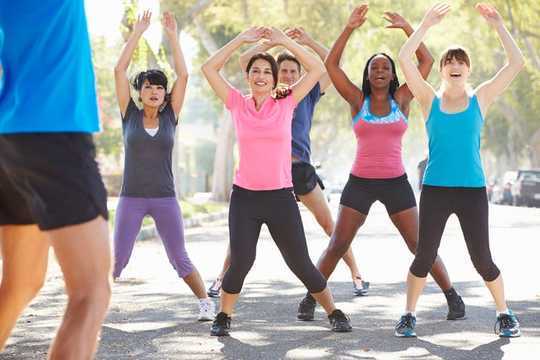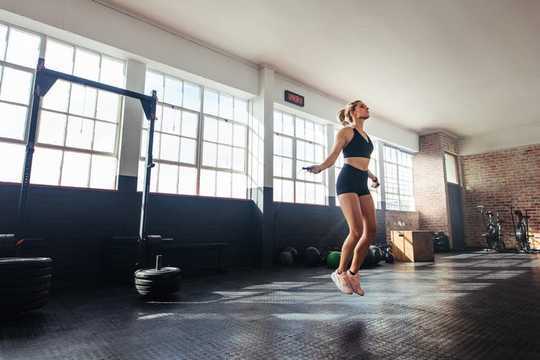Girls and women experiencing period pain often avoid physical activity, but our latest study suggests that doing exercise might actually provide pain relief.
Period pain affects around 90% of women. It can interfere with daily life by limiting activity – and is a common reason for being absent from school or work.
During the menstrual period, the womb contracts to help expel its lining. Fatty substances called prostaglandins trigger these contractions. And more prostaglandins mean more severe cramps.
Cramps usually occur at the start of a menstrual period – or just before – and may continue for two to three days. In addition to pain, symptoms can include nausea, vomiting, tiredness, back pain, headaches, dizziness and diarrhoea.
Get The Latest By Email
Most women rely on over-the-counter drugs for pain relief, including ibuprofen (an anti-inflammatory) and paracetamol (an analgesic). Doctors can also prescribe oral contraceptive pills to decrease pain and relax the muscles. However, these drugs don’t provide everyone with pain relief and – like all drugs – they have side effects.
Physiotherapy is also sometimes recommended as a treatment for period pain. When we reviewed the evidence of physiotherapy we found single trials to support the use of heated abdominal patches, TENS (an electronic device that emits a mild electric current) and yoga. Acupuncture and acupressure, when compared with a placebo, weren’t found to be effective.
Lack of evidence
When conducting our review, we didn’t find a single trial that looked at exercise as a therapy for period pain, so we conducted our own. We recruited 70 women who regularly experienced period pain and randomly allocated them to an aerobic exercise group or a control group (they managed their pain as they normally would).
Pain was measured on a scale ranging from zero (no pain) to 100 (unbearable pain). At the start of the study, women in both groups experienced moderate pain (60, on average). But, at the end of the seven-month trial, women in the exercise group reported mild pain – 22 points less than women in the control group. Experts consider a 20-point reduction in pain to be “clinically important”.
The women in the exercise group also experienced a statistically significant improvement in their quality of life and their daily functioning, such as going to work or climbing stairs.
Exercise has what is known as a “dose response”: the more you do, the greater the health benefits. We do not know yet if this also applies to period pain. For our study, we prescribed aerobic exercise at 70-85% of women’s highest heart rate for 30 minutes, three times a week, with appropriate warm-up and cool-down exercises. This is pretty intense. It might be possible that pain relief could be achieved with exercise at a lower “dose”.
 Exercise may have a dose response. Monkey Business Images/Shutterstock
Exercise may have a dose response. Monkey Business Images/Shutterstock
The findings from a recent pilot study conducted in Hong Kong chime with our own. Researchers found that women who exercised had decreased prostaglandin and pain compared with women who did not exercise. The researchers are now planning a bigger study to confirm these findings.
All these findings suggest that, rather than avoiding PE or the gym, girls and women might want to consider getting involved to see if they provide some pain relief. After all, there’s nothing to lose.![]()
About The Authors
Leica Sarah Claydon-Mueller, Senior Lecturer, Anglia Ruskin University and Priya Kannan, Assistant Professor, Hong Kong Polytechnic University
This article is republished from The Conversation under a Creative Commons license. Read the original article.
books_fitness








